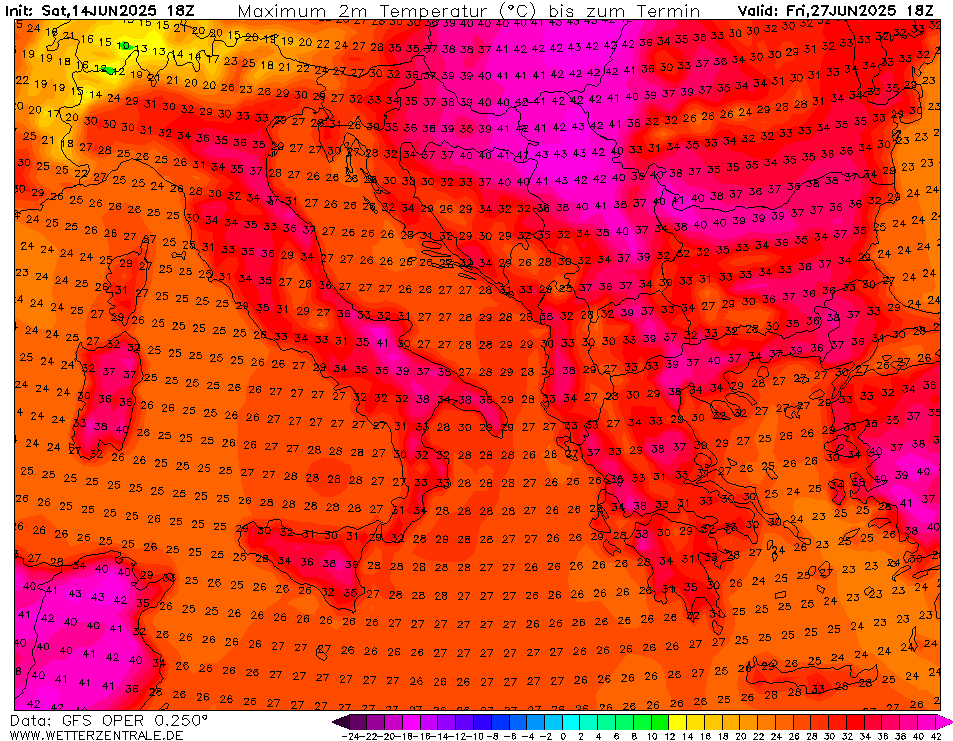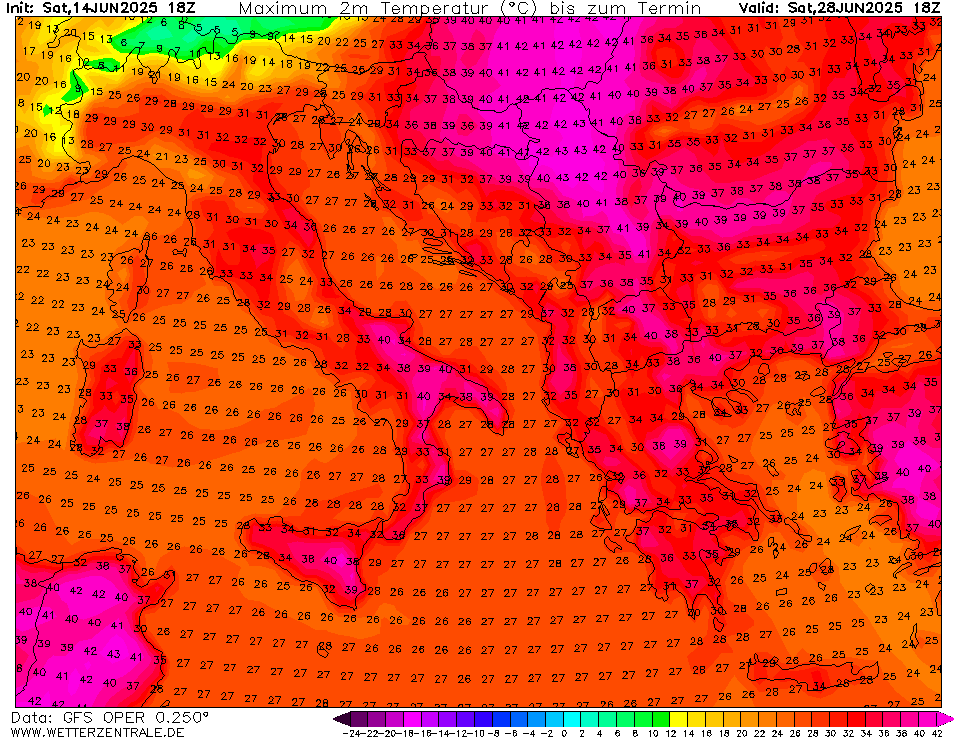
June 2025 may be remembered not as early summer—but as the month Central and Southeastern Europe caught fire. Forecasts are now warning of potential all-time record heat across the Balkans and the lower Danube region. Serbia could hit +43°C, while Croatia and Romania may face +42°C—within just 12 days. If confirmed, this would mark one of the most extreme heat events in regional history.
🔥 An Inferno Is Brewing
Meteorological models are growing more confident: a massive heat dome is forming over Southern Europe and may stretch deep into the Balkans. With a combination of Saharan air masses, stalled high pressure, and bone-dry ground conditions, temperatures are expected to climb daily through the third week of June.
Let’s break it down:
- Serbia could see highs up to +43°C—approaching or surpassing its current all-time record of +44.9°C (recorded in Smederevska Palanka, 2007).
- Croatia, particularly the inland Slavonia region, may hit +42°C—well beyond June norms. The highest recorded temperature in Croatia is 42.8°C, which was recorded in Ploče on August 5, 1981.
- Romania faces similar threats, especially in regions neighbouring Serbia
This is not “just another hot summer”—it’s a potentially historic heatwave.
If we try to add +2/+3°C into the hottest values on the GFS map for national TOPs (resolution of GFS is only 25 km), there is a possibility of all-time national records.
However, +41°C in Hungary on 15. June 2025 hasn´t been fullfilled and temperatures reched finally only up to +36°C. France reported +38°C and Germany +36°C.
🌡️ Why This Matters
Extreme heat is not just uncomfortable—it’s deadly. At these temperatures:
- Heatstroke can develop within minutes.
- Power grids may fail under air conditioning demand.
- Crops and livestock suffer massive losses.
- Wildfire risk explodes, especially in rural and forested areas.
Hospitals and emergency services in all three countries are already bracing for heat-related medical emergencies, especially among the elderly and chronically ill.
🧠 The Climate Connection
Climate scientists are clear: this isn’t just random weather—it’s a clear symptom of a warming planet. Heatwaves like this are now:
- More intense (hotter highs)
- More frequent (shorter return periods)
- Longer-lasting (weeks instead of days)
Southern and Southeastern Europe are heating faster than the global average due to atmospheric and land-surface feedbacks. As a result, what was once considered extreme is now becoming normal.
🧭 Looking Ahead: How to Prepare
Authorities and citizens in Serbia, Croatia, and Romania should act now:
- Follow heat alerts and stay hydrated.
- Avoid outdoor labor during peak hours.
- Create cooling centers in cities and towns.
- Protect animals and crops with irrigation and shade.
For many people, especially those in vulnerable groups, preparedness can mean the difference between life and death.
🛑 Final Word
If the forecasts prove accurate, we’re about to witness a climatic milestone in Southeastern Europe.
+43°C in Serbia? +42°C in Croatia and Romania? In June?
It’s not science fiction.
It’s not just “a hot day.”
It’s the new reality—and it’s coming fast.



Detail.


























